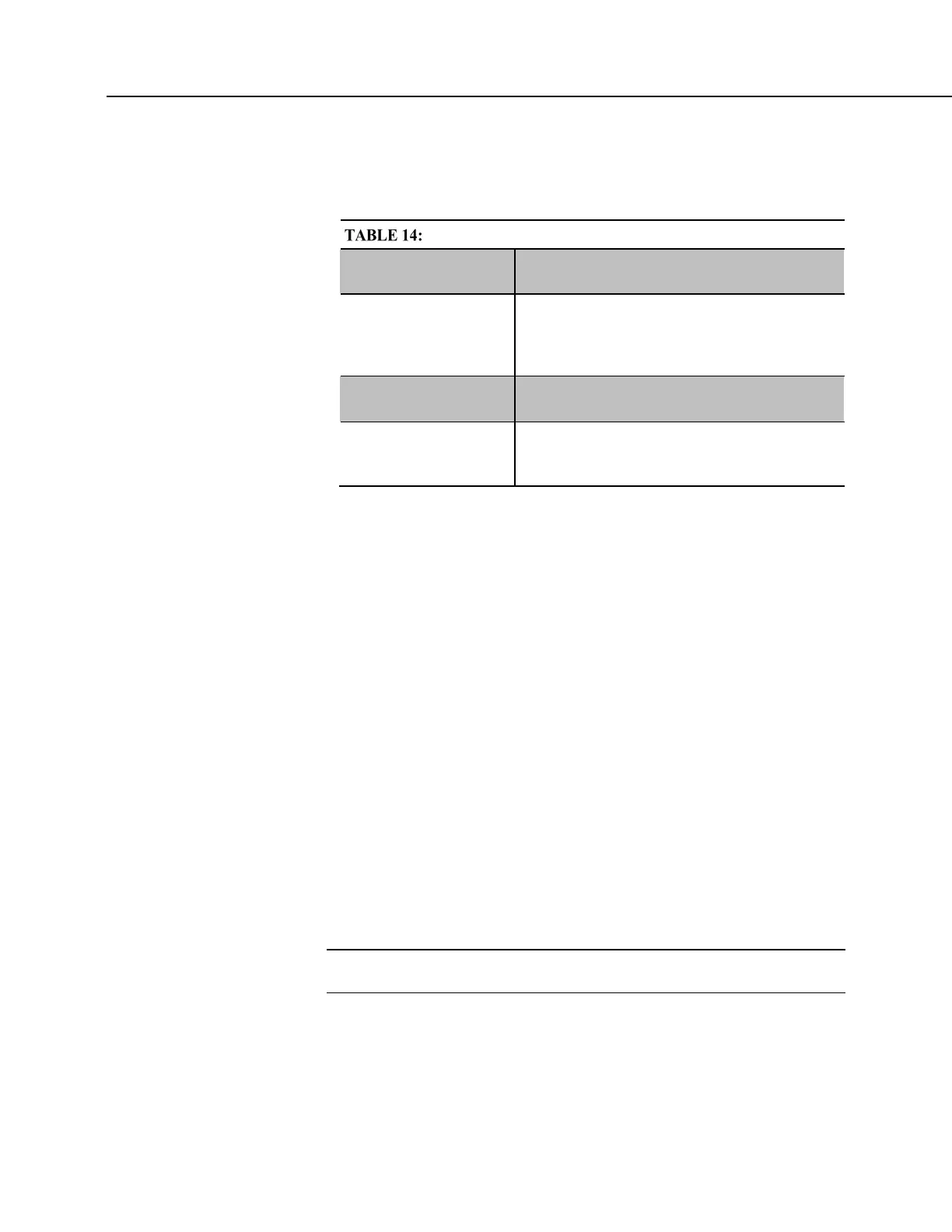Section 7. Installation
If a program is planned to experience multiple lapses, and if comms bandwidth is
not a consideration, the Lapses parameter should be set to 0 to ensure the CR800
allocates adequate memory for each data table.
DataInterval() Lapse Parameter Options
DataInterval() Lapse
Argument Effect
Lapse > 0
If table record number is fixed, X data frames (1
kB per data frame) are added to data table if
memory is available. If record number is auto-
allocated, no memory is added to table.
Lapse = 0
Time stamp and record number are always stored
with each record.
Lapse < 0
When lapse occurs, no new data frame is created.
Record time stamps calculated at data extraction
may be in error.
Scan Time and System Time
In some applications, system time (see System Time (p. 517)), rather than scan time
(see Scan Time
(p. 513)), is desired. To get the system time, the CallTable()
instruction must be run outside the Scan() loop. See Time Stamps
(p. 311).
OpenInterval() Instruction
By default, the CR800 uses closed intervals. Data output to a data table based on
DataInterval() includes measurements from only the current interval.
Intermediate memory that contains measurements is cleared the next time the data
table is called regardless of whether or not a record was written to the data table.
Typically, time series data (averages, totals, maxima, etc.), that are output to a
data table based on an interval, only include measurements from the current
interval. After each data-output interval, the memory that contains the
measurements for the time series data are cleared. If a data-output interval is
missed (because all criteria are not met for output to occur), the memory is cleared
the next time the data table is called. If the OpenInterval instruction is
contained in the DataTable() declaration, the memory is not cleared. This results
in all measurements being included in the time series data since the last time data
were stored (even though the data may span multiple data-output intervals).
Note Array-based dataloggers, such as CR10X and CR23X, use open
intervals exclusively.
Data Output Processing Instructions
Data-storage processing instructions (aka, "output processing" instructions)
determine what data are stored in a data table. When a data table is called in the
CRBasic program, data-storage processing instructions process variables holding

